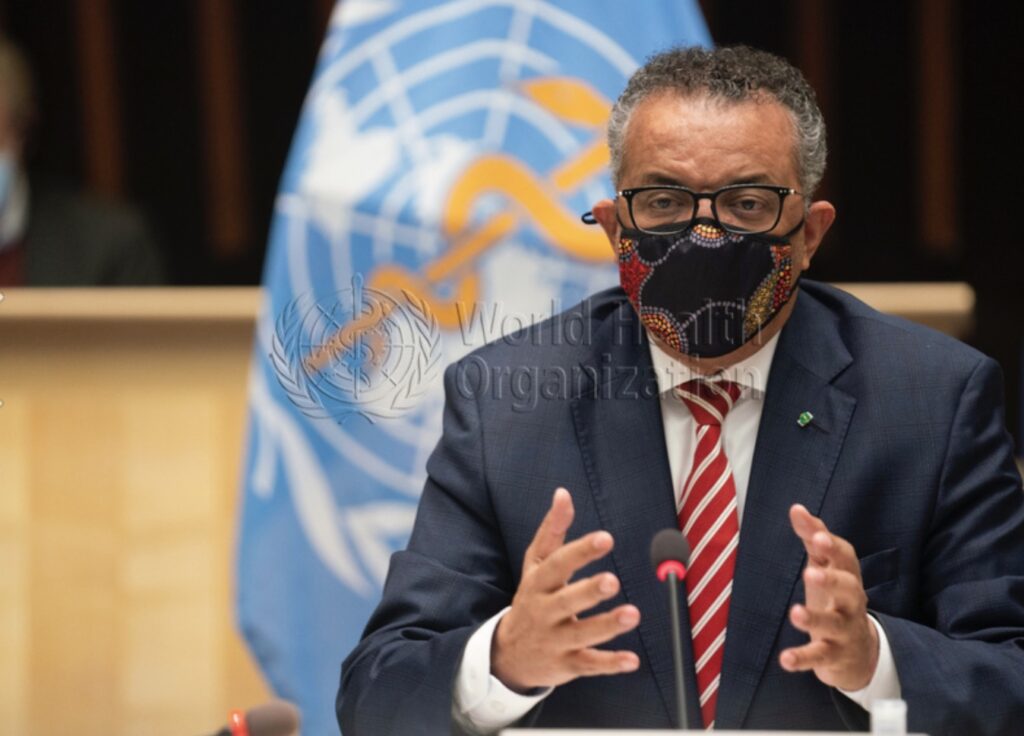By Henrylito D. Tacio
Photos courtesy of WHO
In an article that appeared in National Geographic, Katherine J. Wu wrote this startling information: “There are more viruses than stars in the universe. Why do only some infect us? More than a quadrillion quadrillion individual viruses exist on Earth, but most are not poised to hop into humans.”
A virus is defined as “a submicroscopic agent that replicates only inside the living cells of an organism.” Viruses can infect all life forms, from animals and plants to microorganisms, including bacteria and archaea.
There is an interesting story on how the virus was discovered.
“Louis Pasteur was unable to find a causative agent for rabies and speculated about a pathogen too small to be detected by a microscope,” Wikipedia chronicles. “In 1884, the French microbiologist Charles Chamberland invented the Chamberland filter with pores small enough to remove all bacteria from a solution passed through it.
“In 1892, the Russian biologist Dmitri Ivanovsky used this filter to study what is now known as the tobacco mosaic virus: crushed leaf extracts from infected tobacco plants remained infectious even after filtration to remove bacteria. Ivanovsky suggested a toxin produced by bacteria might cause the infection, but he did not pursue the idea.
In 1898, the Dutch microbiologist Martinus Beijerinck repeated the experiments and became convinced that the filtered solution contained a new infectious agent. “He observed that the agent multiplied only in cells that were dividing, but as his experiments did not show that it was made of particles, he called it a ‘soluble living germ’ and reintroduced the word virus.”
Recent studies have shown that it is normal for viruses to mutate. And that’s what happens with the SARS-CoV-2, the coronavirus that causes coronavirus disease 2019 (COVID-19).

“The more the SARS-CoV-2 virus spreads, the more opportunities it has to change,” warns the Geneva-based World Health Organization (WHO). “High levels of transmission mean that we should expect more variants to emerge.”
Previous reports of the D614G mutation and the recent reports of virus variants from Denmark, the United Kingdom of Great Britain and Northern Ireland, and South Africa have raised interest and concern in the impact of viral changes.
“Of the significant variants reported so far, some are associated with increases in transmissibility but not disease severity,” the United Nations health agency states. “Research is ongoing to address whether the changes impact public health tools and measures.”
Genomic sequencing has been critical in identifying and responding to new variants, according to the WHO.
“So far an astounding 350,000 sequences have been publicly shared, but most come from just a handful of countries. Improving the geographic coverage of sequencing is critical for the world to have eyes and ears on changes to the virus,” said Dr. Maria Van Kerkhove, WHO Technical Lead on COVID-19.
As the UN health agency moves to expand its scientific collaboration and monitoring of emerging variants of SARS-CoV-2, global scientists are intensifying research into COVID-19.
Last Monday, January 12, a day-long virtual meeting of scientists worldwide brought together more than 1,750 experts from 124 countries to discuss critical knowledge gaps and research priorities for emerging variants of the virus.
“Science and research have played a vital role in responding to the pandemic since day one and will continue to be the heartbeat of everything WHO does,” Dr. Tedros Adhanom Ghebreyesus, WHO Director-General, said in his welcome address.
The consultation was structured around six thematic areas covering epidemiology and mathematical modeling, evolutionary biology, animal models, assays and diagnostics, clinical management and therapeutics, and vaccines.
Scientists noted the importance of research to detect and understand early on the potential impact of emerging variants on diagnostics, treatments, and vaccines.
There was a consensus on the importance of integrating the new SARS-CoV-2 variants research into the global research and innovation agenda while enhancing coordination across disciplines.
“Our collective goal is to get ahead of the game and have a global mechanism to quickly identify and study variants of concern and understand their implications for disease control efforts,” said Dr. Ana Maria Henao Restrepo, Head of WHO’s R&D Blueprint.

